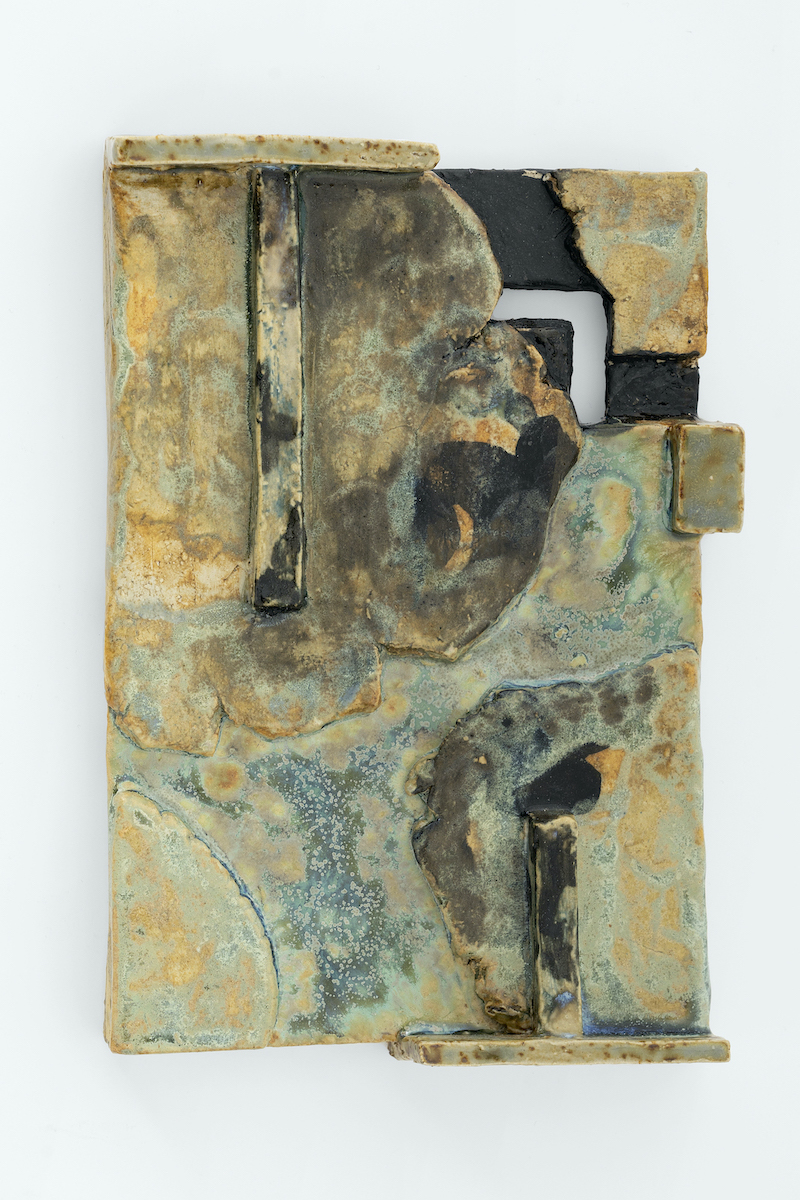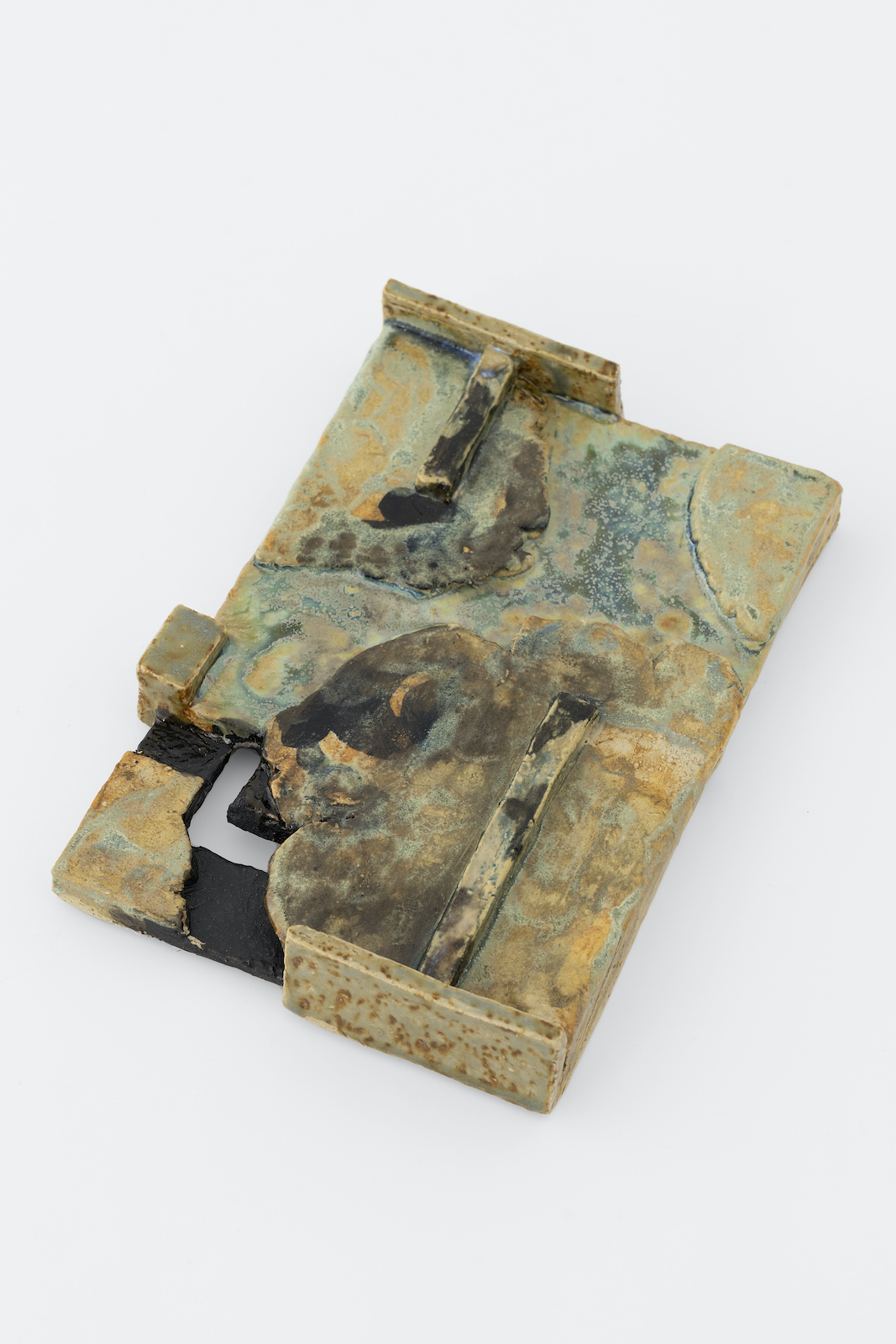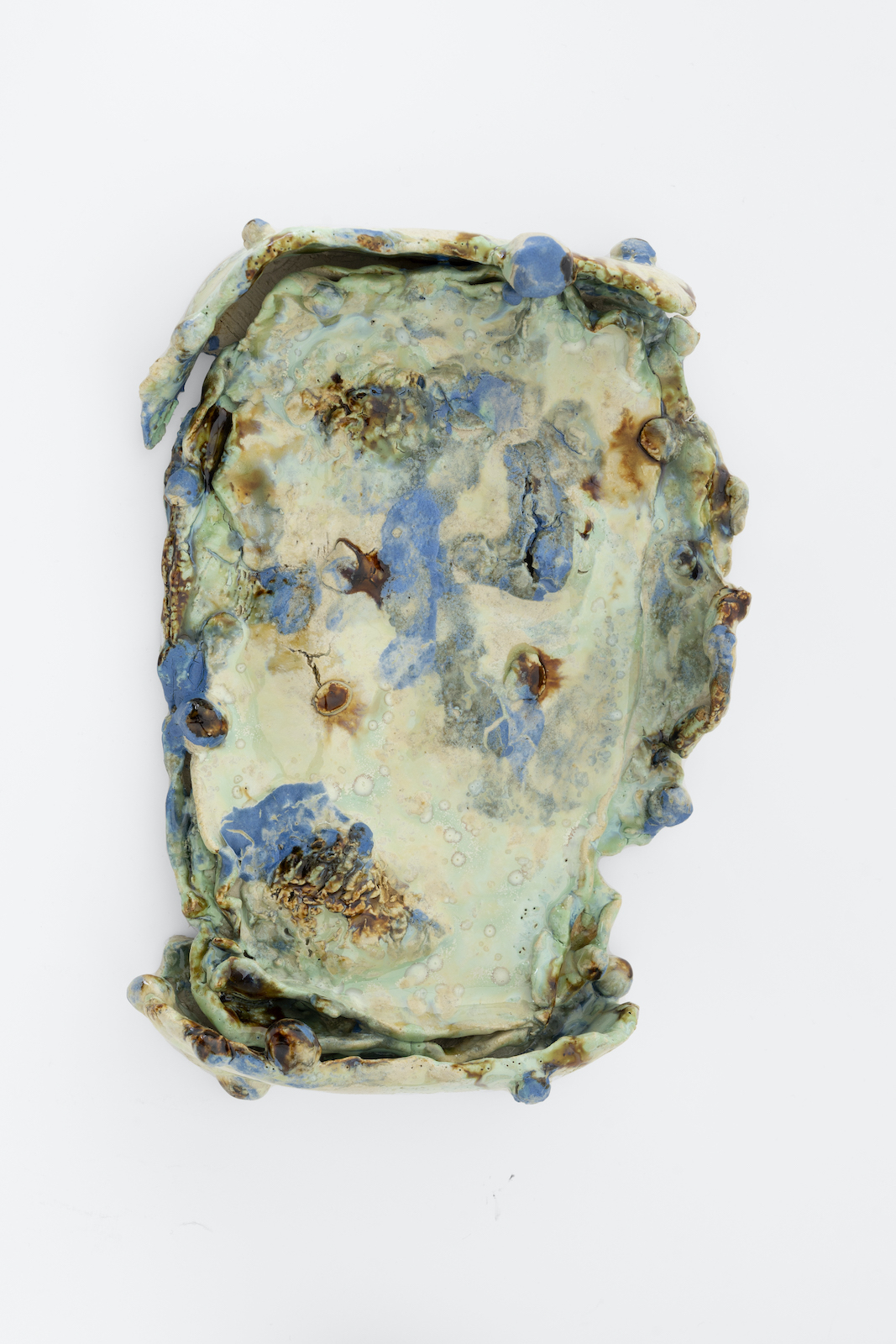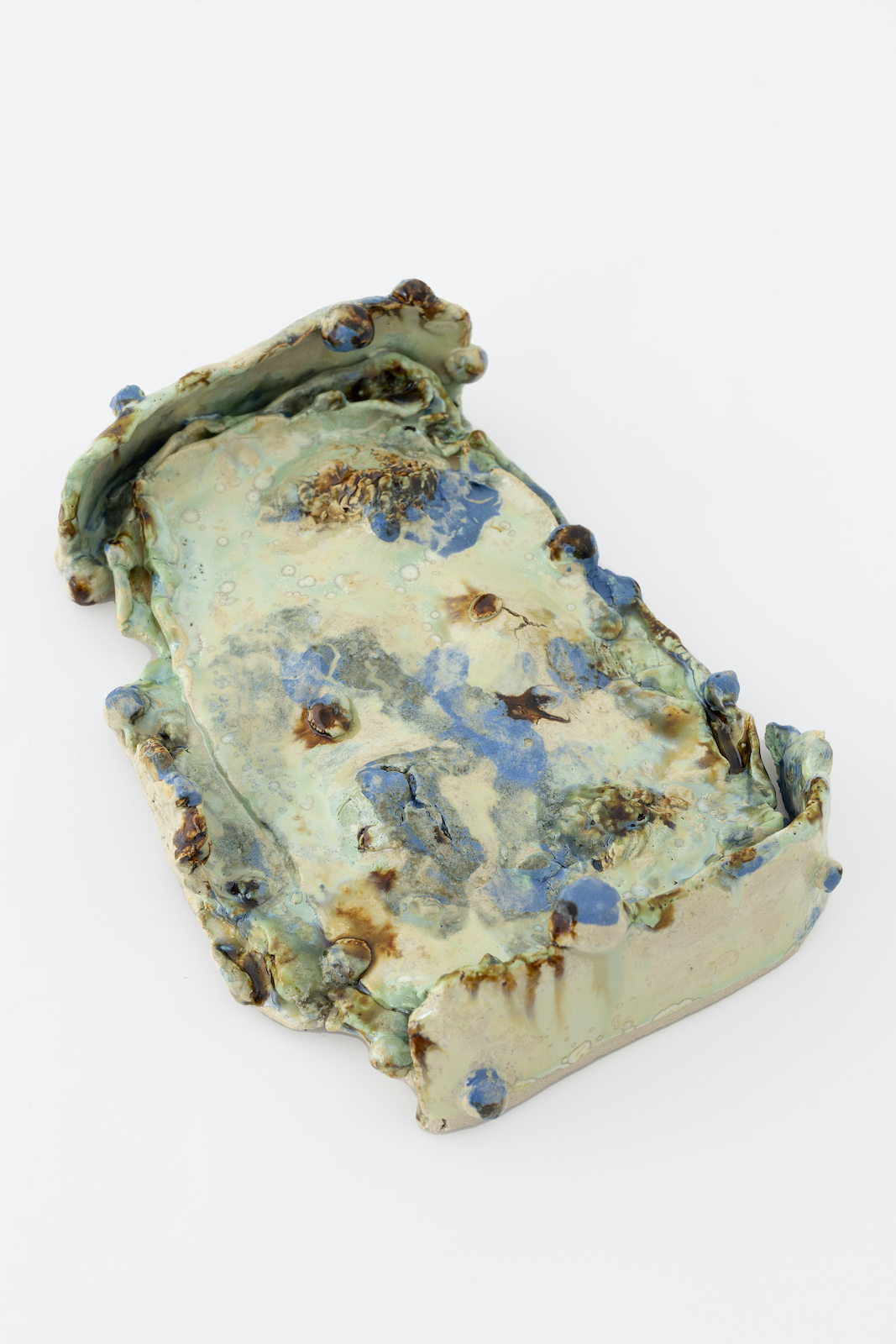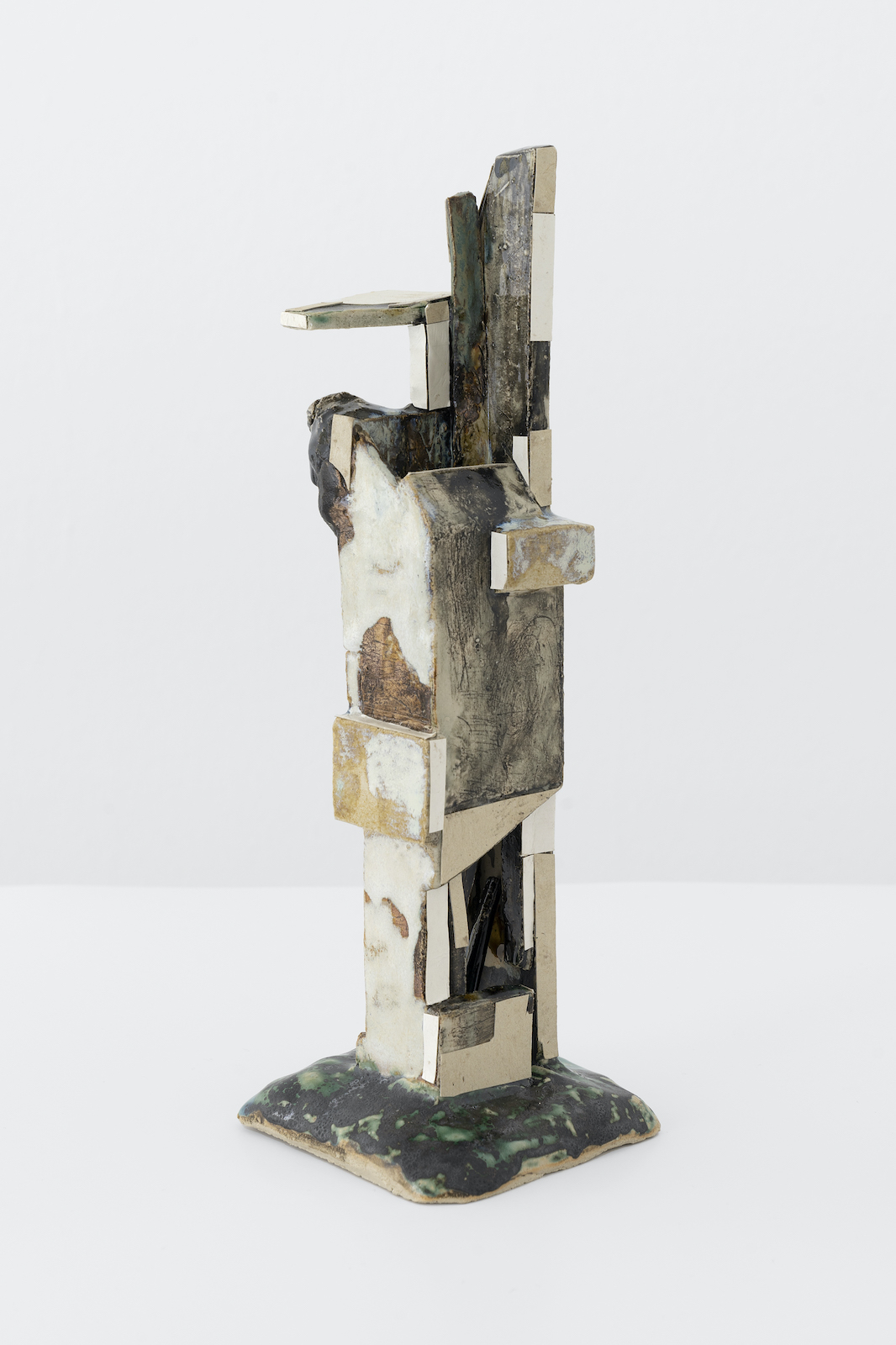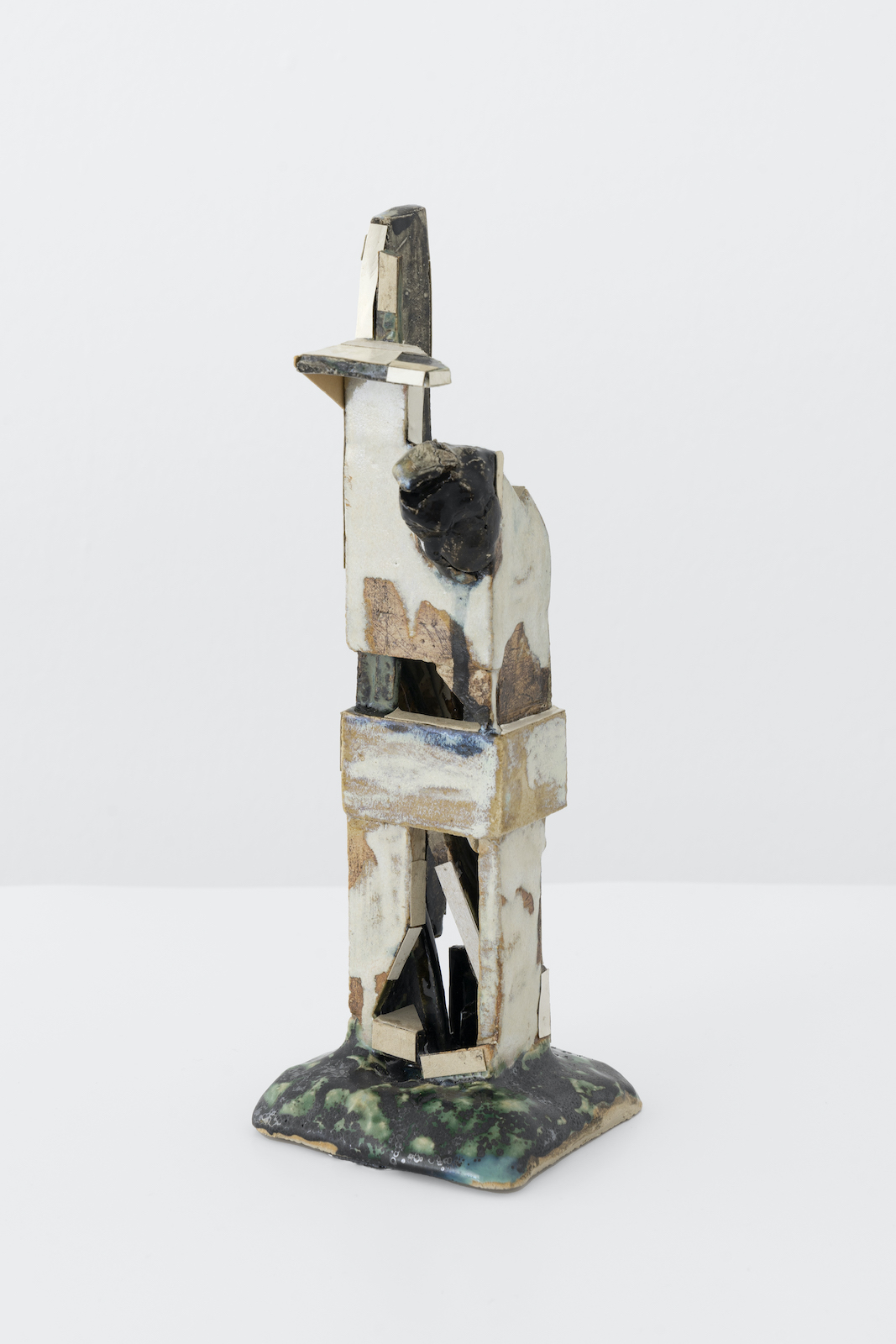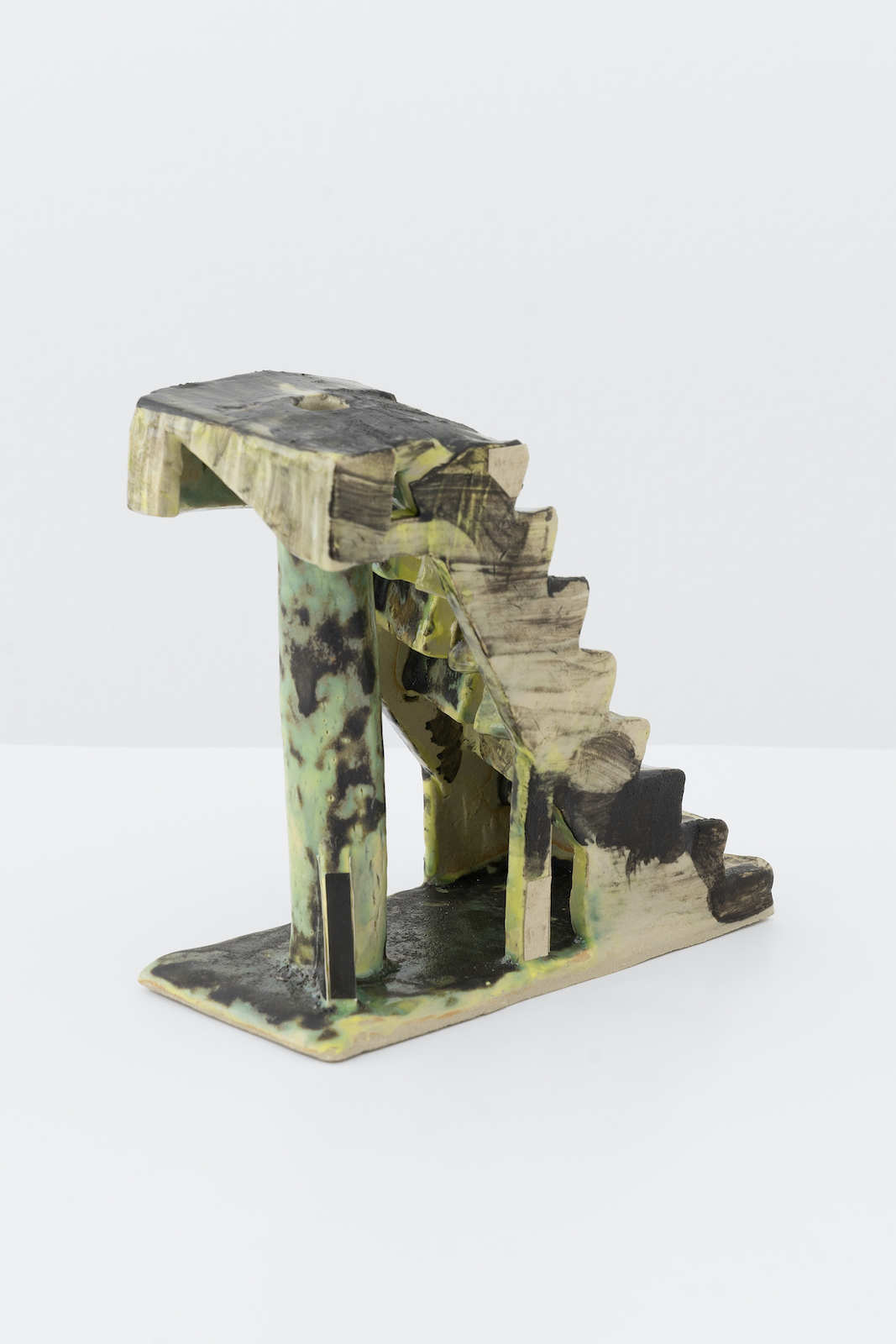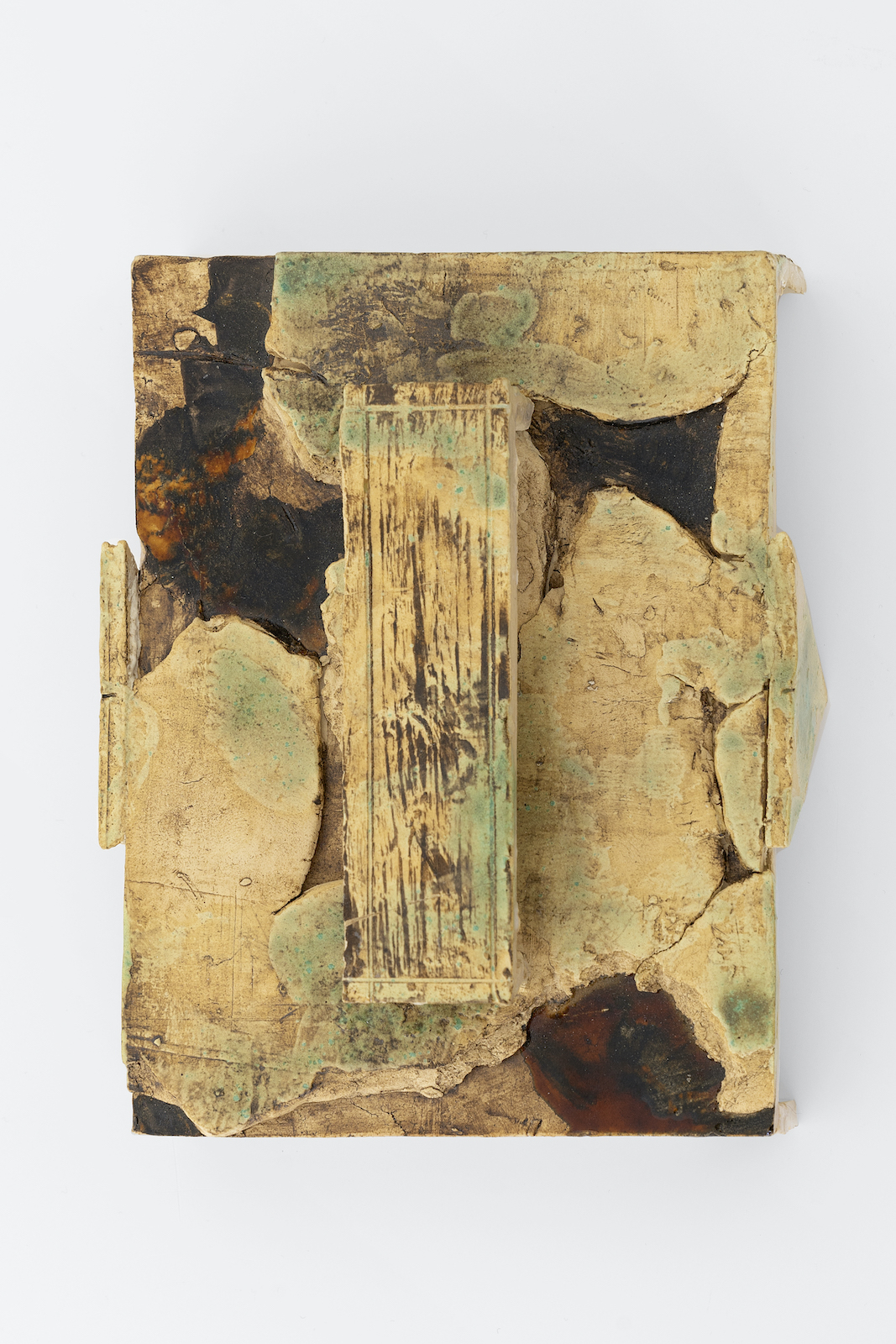
Staircases that lead nowhere and ladders that end at walls, neatly disassembled supporting systems and frames that only partially enclose paintings, chimneys that are not chimneys: Atsushi Mannami’s ceramics deal with imperfection, transience, and meaninglessness, using architecture primarily as a motif. They reference bricolage construction, Japanese tea rooms, and improvised cardboard houses in areas of natural disaster.
Mannami’s background is in painting, and he uses the surfaces of his spatial sculptures to create small paintings of pigment, glaze, and clay that break away from yet allude to classical formats. On some of his works he has attached small strips of paper that wear down over time. In this way, Mannami wishes to allow changeability and to counter the impression of the “everlasting nature of beautiful ceramics,” which is conveyed as soon as the glaze is fired and the color fixed.
In exhibitions such as GAK’s Crossing an empty beach to look at the ocean (2022), the ceramics are presented on ephemeral pedestals made of empty paint buckets, cardboard, or tangerine boxes. Lost and discarded in urban space, they were collected by Mannami in a mental mapping of temporary landscapes. For the fragile ceramics, they become illogical support structures that can be combined infinitely yet can also stand on their own. Together, they form Mannami’s “senseless architecture,” in which something seems to be continually toppling over or torn down, but is in fact held in place.
Atsushi Mannami (b. 1988 in Japan) studied liberal arts with a focus on painting at Osaka Seikei University in Japan from 2007 to 2011. Since 2017 he has been studying at the Hochschule für Künste Bremen. He has participated in group exhibitions on the Hochschule für Künste Bremen’s ship Dauerwelle, as well as at GAK Gesellschaft für Aktuelle Kunst Bremen, and KERAMION Frechen (2022), where he won the Frechen Ceramics Prize 2022.
Jahresgabe 2022
Utopia of senseless architecture, (2021–2022)
Ceramics, paper
5 unique pieces
between 14 x 18 cm and 28.5 × 6.5 × 6.5 cm
Each 595 Euro incl. 19% VAT
Text: Linda Valerie Ewert

